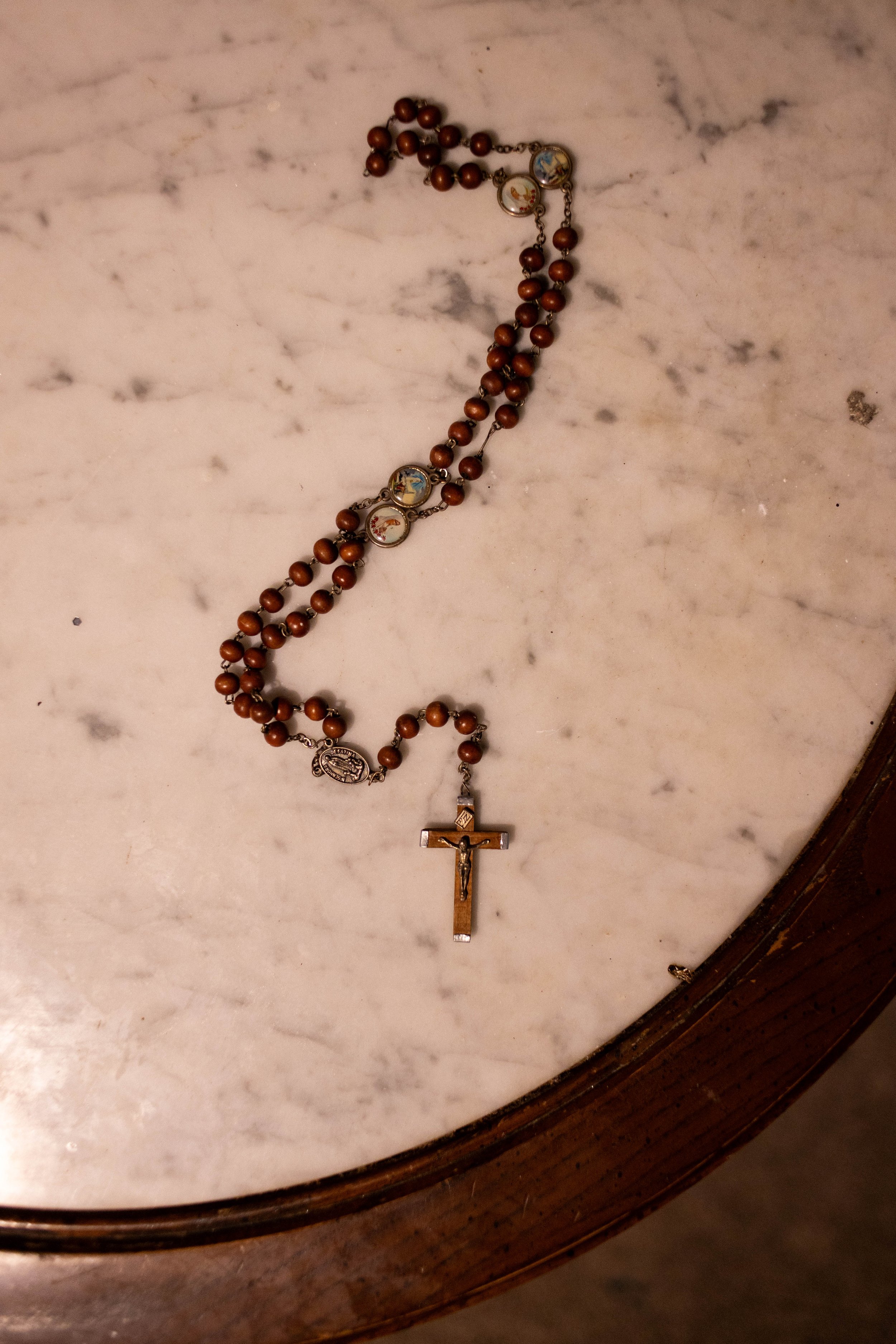See this story on CNN.
Mothers of the Borderland
This project is a poetic portrait of life for young mothers who have crossed the Mexico-U.S. border and immigrated to the U.S.
Text & photographs by Emily Whitney.
Warm and empty land lies ahead, and her legs have become weak from hours of walking in the desert. Barbed wire, cacti, and silence lie in the night and her mouth tastes bitter. Her family is behind and a tangle of fear and hope ahead. Is the future worth the risks and separation? She’s left family behind but created family in this new place. She’s now a mother who's lost her own mother. She’s lonely and doesn’t have security — how can she make a home without knowing where home will be?
In 2024, 43% of migrants encountered at the U.S.-Mexico border were children or families, and families are now the fastest-growing demographic of undocumented border crossers. Women often leave their home countries because of violence, abuse, or lack of opportunities. And many have come alone — risking everything for a way out.
N.: Guatemala
N. came to the U.S. at nine-years-old with her father in hopes of a better education and career opportunities. But after a few years, she had to drop out of school to work in a mushroom farm in Pennsylvania in order to send money back to her mother and siblings in Guatemala.
When she became pregnant, she first considered having an abortion. But months after her son was born, she said, “I’m doing really great being his mom. It didn’t make me happy when I found out I was pregnant, but now, I’m really glad I had him.”
At seventeen-years-old, she begins life as a mother without most of her family nearby to support her. She says, "If I can have a wish, I would ask for my mom to come here but I know she cannot come.”
Six months postpartum, she also had to face depression without her own mother by her side. She’s now in cyber school with two years left until she graduates from high school.
N. is also facing the hard news that even if she does obtain a visa or asylum, it may be years before she’d reunite with her mother. “One of the biggest things that I want is citizenship,” she says. “Because there is one reason why I want to go back — to see my mom. That’s one of the biggest dreams I really have.” Although she’s worried about what the current administration will mean for her family and friends, she’s managed to get a visa case pending in hopes that it will protect her from deportation. Her father, however, may be faced with no choice but to leave her.
She’s encountered people in the U.S. with a wide range of opinions on immigration. Many in her community are welcoming, but that has not always been the case. N. says, “People are here for [a] reason. My dad is here to [support family]—those eleven kids [who] need clothes and to go back to school, need books, pencils, and all that. And he can’t get enough [in Guatemala].”
Motherhood involves unique challenges because the responsibilities of being a caregiver are compounded with the hardships that are common to new immigrants. Many women coming over the border flee violence and poverty, endure abandonment from their partners, and then continue to face barriers from accessing the opportunities they hoped for in the U.S.
Young immigrant mothers frequently drop out of school to make an income, face social isolation, are overcharged for crowded and poor living conditions, and work long hours to provide for their children. But despite the challenges faced by many who endure unrealized dreams of their own, these women do all that they can to protect their children. They are heroic.
Liliana Velazquez: Guatemala
Liliana Velazquez came from Guatemala to the U.S. all by herself at age fourteen. She had grown up in a small mountainous village with heavy responsibilities cooking for the family, tending to the goats, fetching water, and collecting firewood. She would wake up at about one o’clock in the morning to begin preparing breakfast. Eventually, she had to drop out of school to attend to household chores and because there was no money for school. She was told, “Only men should study. Education is worthless for you.”
One day, she heard that women in the U.S. have more opportunities; that they have more rights, and men respect women more. She’d watched her older sister get married at the age of fourteen and since then have seven children. But her brothers had already left for America. Liliana had seen the violence and alcohol, and the pain it brought, and decided that she was done. “I distrusted men, I was very disillusioned, I hated them for what they had done to me,” she says.
She set off on foot with just a backpack and eventually made her way across the border.
“I traveled from Guatemala through the mountains and on top of boxcars. I was robbed and got caught in the desert,” she writes in her memoir. As incredible as her story sounds, children crossing the border alone is not uncommon. In 2024, The Office of Refugee Resettlement received 98,356 unaccompanied children’ referrals from the DHS.
Liliana turned fifteen-years-old while she was locked up in a detention program for children in Phoenix, AZ.
“When I [got] here, I [started] studying and took therapy,” Liliana says. “I had a lot of trauma ... because of lack of education, lack of opportunities for jobs, from abusive relationships, and there is a lot of violence. Most of the women come from violence.”
Today, Liliana is a citizen of the U.S. and a single mother. She decided she didn’t want her daughter to see violence, so she got out of her relationship with her child’s father.
“I had to find a job, the pandemic was starting, and I was suffering from postpartum depression.” She continues, “Being a single mom is very hard, we have to work so much. [But] my baby is like a miracle in my life. She pushes me to be stronger, and [gives me] a sense of living and purpose.”
A.: Ecuador
A. made two attempts across the jungles of South America from Ecuador before successfully entering the U.S. and escaping violence. In Ecuador, homicides rose by 245% from 2020 to 2022, and in 2023, Durán was ranked the world’s most violent city.
Now living in Pennsylvania, A. faces the fear of being able to provide for her new baby, and the pain of still being separated from her other two children who live with her mother in Ecuador.
She is the sole provider for her children in Ecuador, and prior to having her baby in 2024, she was working long hours at a restaurant to send money to them. Today, she watches a friend’s baby for income while staying at home with her own baby. She’s also pursuing asylum in hopes of gaining legal status and bringing her children to the U.S., but the multi-year wait time leaves her feeling helpless, and she doesn’t want her children to cross the border without asylum granted because she’s terrified of what could happen. Her dream is to be reunited with them, and she just wants a peaceful life in the U.S.
She says life is better in the U.S. because she can feel safe coming home from work. In Ecuador, she says, there was so much gang violence that women can’t go out at night, or they’ll be robbed or killed. For her, there’s no going back.
For young immigrants like A., the symbol of the border never really leaves them. It continues to follow them — to haunt them — creating walls from their engagement in society and a sense of uncertainty about where they belong.
I.: Venezuela
I. came to the U.S. from Venezuela with her husband and daughter. They were experiencing political persecution and had faced death threats. “Economically, it was so hard,” she says. “In Venezuela, you don’t live — you survive.” Venezuela is one of the world’s largest displacement crises with almost 7.9 million migrants and refugees as of December 2024.
Now living in the U.S., I. says, “I have many jobs. [And] I miss my roots. I miss the place where I was born and grew, and my family.”
For women who become pregnant shortly after entering the U.S., the fear of how to provide for their child quickly escalates without a well-paying job, legal documentation, or financial stability. A few months after arriving, I. became pregnant. She says, “I was in a very hard situation because we had just come. We had no job, no car, nothing, and I found out I was pregnant. I didn’t feel ready to have a baby.”
“It was so difficult, but my kids are the most beautiful [thing] I have in my life. [My children teach me] so many things. [They] help me to go forward to wake up every morning. [When] we play with them, [we] forget about everything — all the stresses of life … My dream is to have a home for my children where they grow up happily and safe.”
E.: Mexico
E. came from Mexico to get out of a dangerous relationship in Mexico. The people who got her across the border were charging $13,000 per person. “I was super nervous because they said if you don’t pay, you disappear,” she remembers.
She became pregnant in the U.S., saying, “My pregnancy was hard. I wanted to be with my mom and [got] no support from [my baby’s] dad. [But] I knew if one day I get pregnant, I’m going to keep the baby. I was really scared [though].” Today, she’s planning to go back to school for nursing to provide for herself and her son.
However, the majority of undocumented immigrants are estimated to live the rest of their lives in the U.S. without any opportunity to become legal residents.
Since the 2024 election, the limited sense of security these immigrant mothers felt has started to fade. They wonder if they will be one of the lucky ones, or if they’ll be shipped back to a place that no longer feels like home.
But despite the challenges these women face, each of them has found joy and new purpose in motherhood. While much has been taken from them, the tender magic of new life still emerges in the heart of adversity.
The day they set out for America, these women became friends with zero — zero money, zero friends, and zero familiarity. Home has lost its meaning as they realize their children will never know what it meant to them. But as they learn to live under a new flag, piece by piece they lay a foundation and hold onto this little world of two.
*With safety being a concern for many of these women, I'm primarily photographing anonymously.


















































